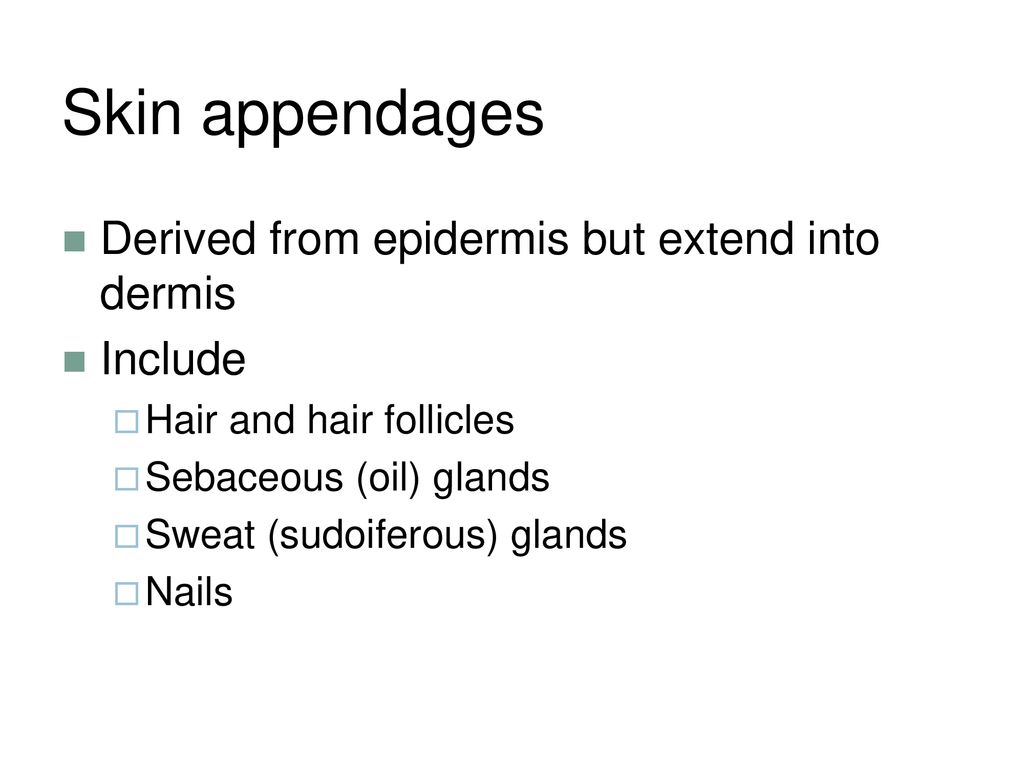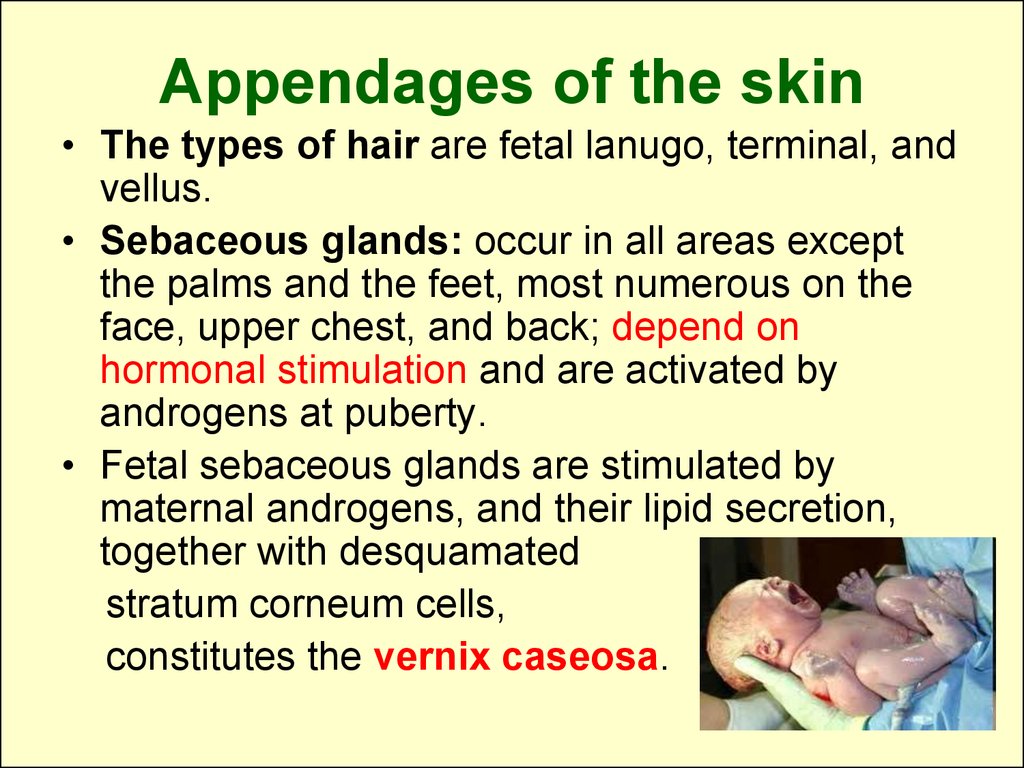Skin and Appendages of skin Biology Diagrams The skin is made of multiple layers of cells and tissues, which are held to underlying structures by connective tissue (Figure 5.1.1). The most superficial layer of the skin is the epidermis which is attached to the deeper dermis. Accessory structures, hair, glands, and nails, are found associated with the skin.

Structure of Skin | Layers & Appendages Explained | B Pharm Quick RevisionLearn about the structure of the skin in this quick educational short! Understand t

Histology, Skin Biology Diagrams
Skin appendages are epidermal and dermal-derived components of the skin that include hair, nails, sweat glands, and sebaceous glands. The skin, along with hair and nails, is the protective covering of the body, the skin prevents germs from entering the body and damaging the internal organs, the skin manufactures vitamin D when exposed to the sun's ultraviolet rays, and vitamin D is an

CHAPTER 7 Skin and its appendages. In this chapter, the types and functions of skin in different parts of the body are described first, followed by the microstructure of the epidermis and dermis, and the appendages of skin including the pilosebaceous units and the sweat glands and nails. The basal or deepest layer of cells, adjacent to the

Skin and its appendages Biology Diagrams
The skin appendages are epidermal and dermal-derived components of the skin that include hair, nails, sweat glands, and sebaceous glands. Each component has a unique structure, function, and histology. This article describes the unique characteristics of each of these components and provides insight into tissue preparation for microscopic evaluation and the clinical significance of these
